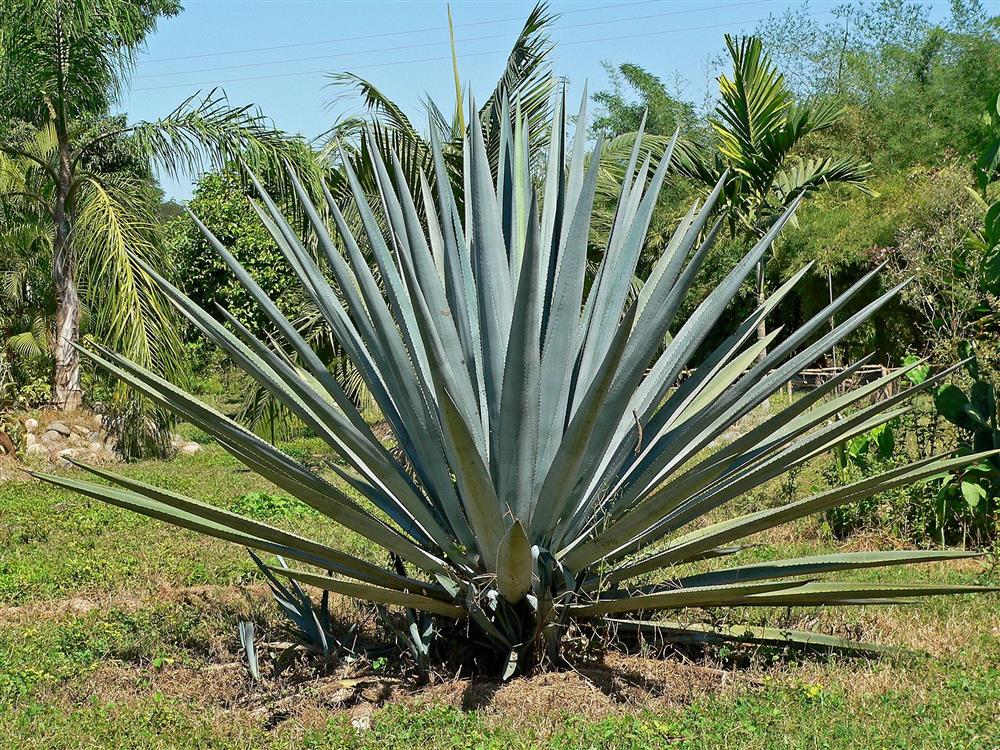The American Agave Spirit

There are hundreds of varieties of the agave plant scattered throughout the American southwest and throughout Mexico, but only one is crowned the true agave of Tequila- the blue Weber. Agave from the blue Weber is the product of harvesting and stripping the pifia off the plant. The piña is then mashed, cooked, and the sugar syrup is extracted for fermentation. This is how the foundation of Tequila is made.
However, there’s a catch- distillers can’t call any spirit made with blue Weber agave Tequila, even if the process and recipe are the same. Using the name of ‘Tequila’ for agave spirits is regulated, and can only be used for blue agave spirits produced in specific places in Mexico: the state of Jalisco, and parts of Guanajuato, Tamaulipas, Michoacán, and Nayarit. This leaves distillers outside of those regions, especially in the US, with the need to create alternative titles for their agave produced spirits.
Enter the American Agave Spirit. To quote the motto of Los Osuna Blue Agave Spirits, a 143 year old company with blue agave products from State of Sinaloa in Mexico, American Agave Spirits are “Tequila in the Process, but not from the region“. Making American Agave Spirits is no small feat, but the long history of agave spirits in both Mexico and the US and surging interest amongst American distillers offers plenty advice and reward.
Agave plants aren’t geographically bound, which means Americans can grow and produce their own agave if they have the time, but it can still be imported by distillers for production. The difference in the two types of agave-made spirits however, isn’t just from the plant itself. “In my opinion, the biggest difference between American agave spirits and Tequila is the quality of small-batch craft,” explained Mike Brennan of BSG Distilling. “Consumers can purchase small-batch Mexican Tequila, but it can be quite expensive and difficult to find. Consumers spend most of their money on fancy bottles and great marketing; the Tequila inside the bottle isn’t always an above-par product. An American agave distiller can show consumers their process, batch-produce a quality product, and gain a share of the fast-growing Tequila/Mezcal/agave spirits market.”
However, other differences between authentic Mexican Tequila and American agave spirits can come from whether or not the plant was directly used in the process. “The plant matter in a traditional agave fermentation adds an earthy, peppery and smoky flavor that is present in the best tequila from Mexico,” said Andy Causey of BSG Distilling. That’s not a reason to throw the towel in on American agave spirits, but it does present a unique challenge to distillers seeking their own Tequila-type beverage. Ultimately, it all comes down to production.
“Agave is one of the easier production processes in distillation,” explained Brennan. “The fermentation requires no pre-cook, gelatinization, or mashing – for example, our agave syrup is ready to dilute and ferment. As long as the proper yeast and nutrients are used, the ferment is relatively straightforward. A ‘silver’ or ‘blanco’-style product requires no aging and can be market-ready in just a few weeks. A ‘reposado’ or ‘rested’ can be barreled for 12 months or less.”
Despite the ease of production, proper steps and ingredients need to be in place for quality spirit. Brennan explained how the most common mistake he’s seen is “not making a good head cut during distillation.” Agave fermentation does have some volatile compounds which should be separated. His advice is to “pull and discard heads until you smell the pure, floral aromas of the hearts.”
Once it’s time to get into yeast and nutrients, agave presents a few unique challenges. Agave is composed of a high fraction of fructose, which calls for a fructophilic yeast in fermentation. Agave also contains furfural, a byproduct of sugar caramelization which occurs during the roasting process of the agave heart, called the piña. This furfural can be toxic to numerous yeast strains. Furthermore, agave syrup can be poor in YAN (yeast assimilable nitrogen), much like apple juice, honey, and other sugary bases. YAN is critical for yeast health and preventing the production of sulfur-containing compounds in your batch. Luckily, the addition of yeast nutrients like Superfoodand Ciderfermcan offset the YAN deficiency in this substrate. These nutrients need to be used at pitch, and again 24 hours after fermentation begins. Utilizing yeasts and nutrients that are compatible with your agave and prime for battling the conditions agave presents is crucial. Recommended yeast strains include SafTeq Blueand SafSpirit C-70. All of these yeasts prefer to be very warm during their fermentation process. For example, SafTeq Blue is best at about 90-91 F.
Ultimately, the best part of the American Agave Spirit process is the freedom of the formula. Agave Spirits cannot be Tequila, so flexibility can be afforded to the distiller. As such, each creation of American Agave Spirits is one-of-a-kind. Start your agave spirit today with BSG’s Premium Agave Syrup and discover the newest frontier in American spirits.